Approximately five and one-half years ago, “Soldier on Horseback,” a painting by 17th century Flemish Baroque master Sir Anthony van Dyck, was stolen from the Christ Church Picture Gallery in Oxford, England.
Where the Theft Happened
Christ Church is one of the more than thirty different colleges that make up the University of Oxford, often called Oxford University, in the town of Oxford, England. The University of Oxford, the oldest university in the English-speaking world, has been in continuous existence for more than 800 years.
All undergraduate students at Oxford become members of a particular college, as well as of the university. Each college has a royal charter and is independent and self-governing.
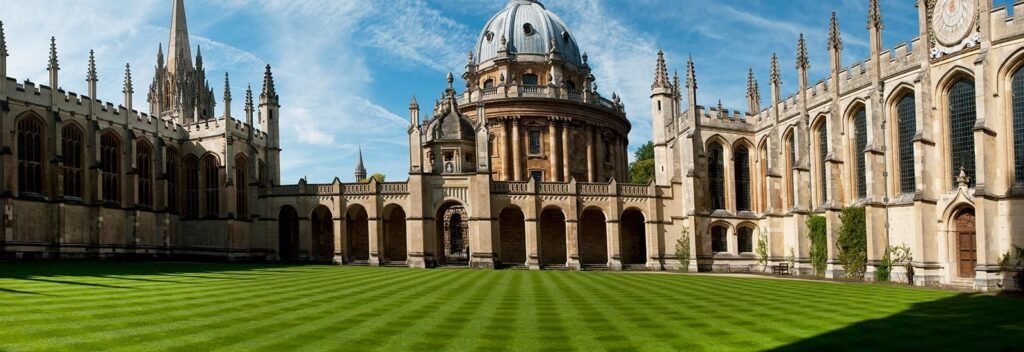
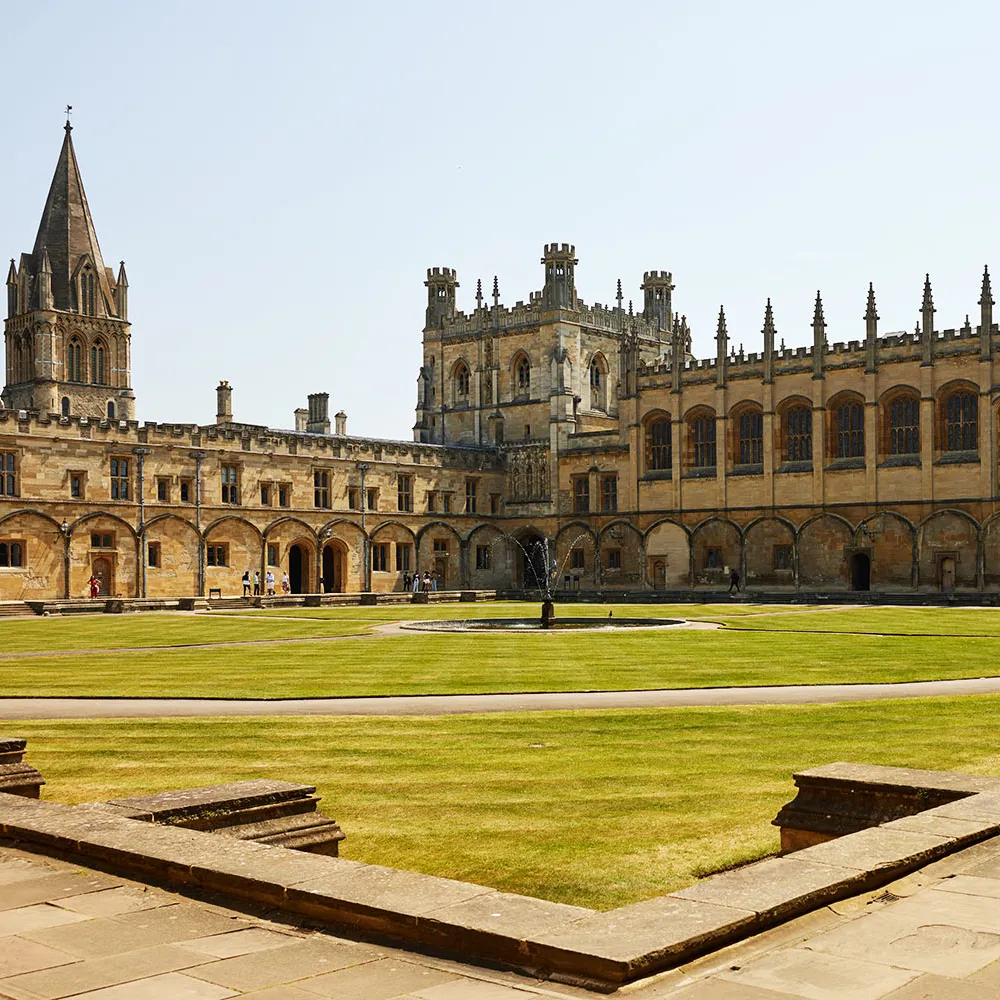
Christ Church College was established in 1525 by Cardinal Thomas Wolsey as Cardinal College on lands that had belonged to the Priory of St. Frideswide, the patron saint of Oxford. In 1529, however, the college building was abandoned in an unfinished state after Wolsey’s fall from Henry VIII’s favor. It was refounded by Henry VIII in 1546, the same year that he founded Trinity College in Cambridge. The college is named for Christ Church Cathedral, one of the smallest cathedrals in England, which serves as the college chapel as well as the cathedral of the Oxford diocese.
The heart of Christ Church College is the Great Quadrangle. This quadrangle, the largest in Oxford, has a Sir Christopher Wren-designed clock tower dating to 1682. This quadrangle is also affectionately known as “Tom Quad,” after “Great Tom,” the bell in Wren’s tower, which rang out for the first time in May 1684.
Notable alumni of Christ Church number more than a dozen British Prime Ministers, including William Gladstone, Sir Robert Peel and Anthony Eden; as well as:
- King Edward VII
- Philosopher John Locke
- Poet W.H. Auden
- Author Charles Dodgson (better known as Lewis Carroll)
- Antarctic explorer and writer Apsley Cherry-Garrard
- Writer and art critic John Ruskin
- Philip Stanhope, founder of the National Portrait Gallery in London
- Composer Sir William Walton
- Zulfikar Ali Bhutto, Pakistani statesman and founder of the Pakistan Peoples Party
- William Penn, founder of Pennsylvania
- Charles Cotesworth Pinckney, an American statesman and military officer who served as a delegate to the Constitutional Convention and as U.S. Minister to France; and
- Thomas Pinckney, an American statesman, diplomat and military officer who served in the American Revolutionary War and the War of 1812 and as governor of South Carolina and U.S. Minister to Great Britain.
Women were not accepted into the college until 1980.
Christ Church first acquired an art collection from a bequest of General John Guise, an alumnus of the college, in 1765. General Guise left to his alma mater more than 180 Italian 16th and 17th-century paintings, including works by Tintoretto, Annibale Carracci and Paolo Veronese, and more than 1900 drawing by artists such as Leonardo da Vinci, Michelangelo and Raphael.
With that gift, Christ Church came into possession of a publicly accessible art collection unequalled by any other institution in Britain at that time. As a result, the college was able to introduce art education into its curriculum without the need for students to travel to foreign lands or gain entry to private collections.
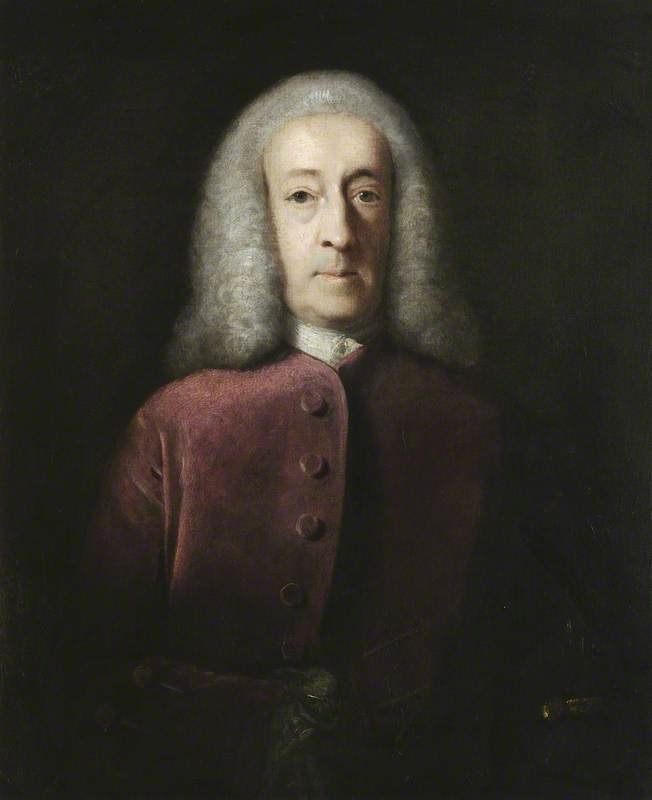
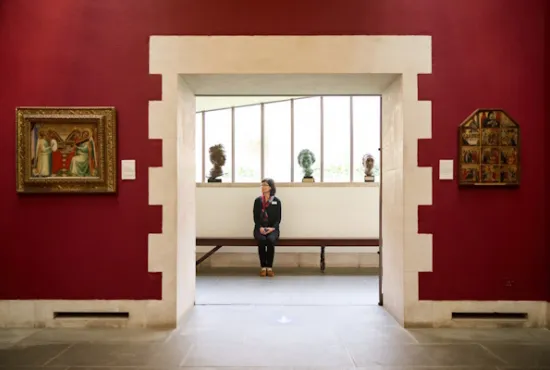
Later gifts and bequests, including 37 Italian 14th and 15th-century paintings gifted by alumnus W.T.H. Fox-Strangways, a British diplomat and art collector, added to the luster of the collection.
In 1968, the Christ Church Picture Gallery, a gallery built specifically to house the collection , was opened by Queen Elizabeth II. Today, the gallery holds approximately 300 Old Master paintings and almost 2000 drawings. The collection includes paintings by Carracci, Duccio, Fra Angelica, Giovanni di Paolo, Filippino Lippi, Frans Hals, Salvator Rosa, Tintoretto, Anthony van Dyck and Paolo Veronese, as well as drawings by da Vinci, Raphael, Michelangelo, Albrecht Dürer and Peter Paul Rubens.
How the Theft Happened
Around 11:00 p.m. on Saturday, March 14, 2020, three oil paintings were taken from the Christ Church Picture Gallery. The most valuable of the stolen paintings was van Dyck’s “Soldier on Horseback.” Also stolen were two paintings by Italian Baroque artists: “A Boy Drinking” by Annibale Carracci and “A Rocky Coast, with Soldiers Studying a Plan” by Salvator Rosa. At the time, the three works had an estimated value of 10 million British pounds.
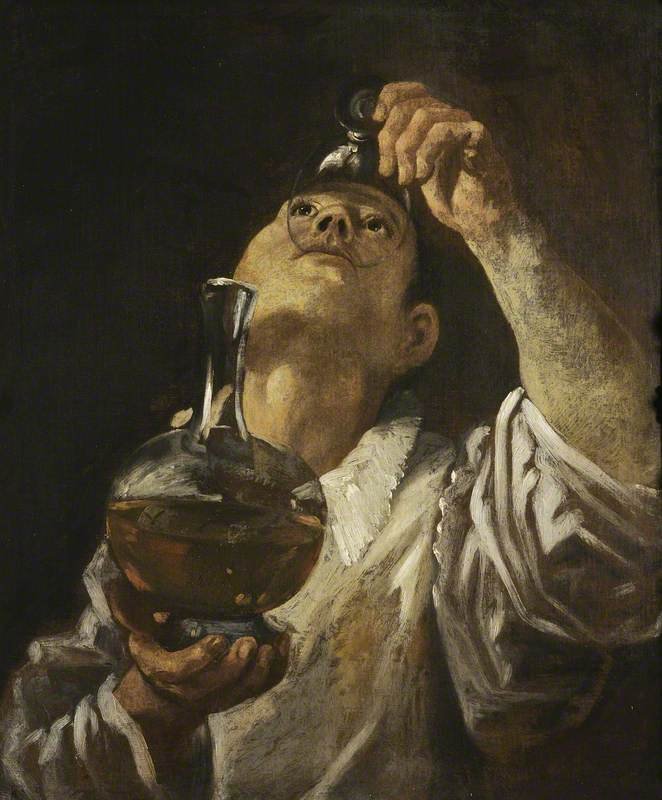
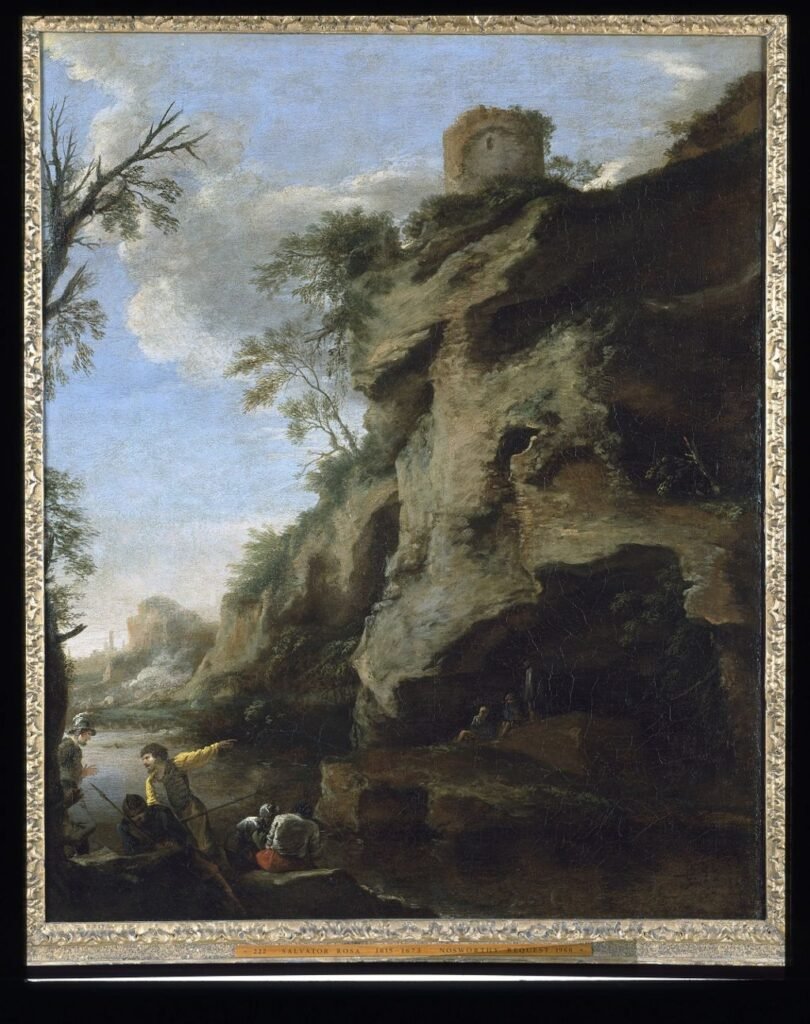
The local police did not provide any details as to how the theft was carried out or the type of security in the gallery at the time of the theft. Some accounts of the theft, however, reported that law enforcement suspected that the getaway from the theft might have been made by boat.
Almost four years later, in early 2024, the Christ Church Picture Gallery had reason to celebrate. Salvator Rosa’s “A Rocky Coast, with Soldiers Studying a Plan” was recovered. The painting had been turned over to authorities in Romania and then recovered by Thames Valley Police. According to the Romanian police, they had been contacted by a man who had sold the other two stolen paintings but still possessed this one and wanted to return it. Nothing further has come to light thus far about the whereabouts of the stolen van Dyck or the Carracci paintings.
How to Identify this Missing Piece of History
The missing painting, an oil on canvas painted circa 1616, is 91 centimeters high by 55 centimeters wide. All in shades of browns and white, with a few tinges of rose, and a smoky sepia background, it depicts a confident heroic soldier, wearing armor and holding a sword, mounted on a white horse.
The dramatic composition and lighting create a sense of power, and van Dyck’s use of color and highlighting reflect his technical skills and the Baroque style of which he was such an important part.
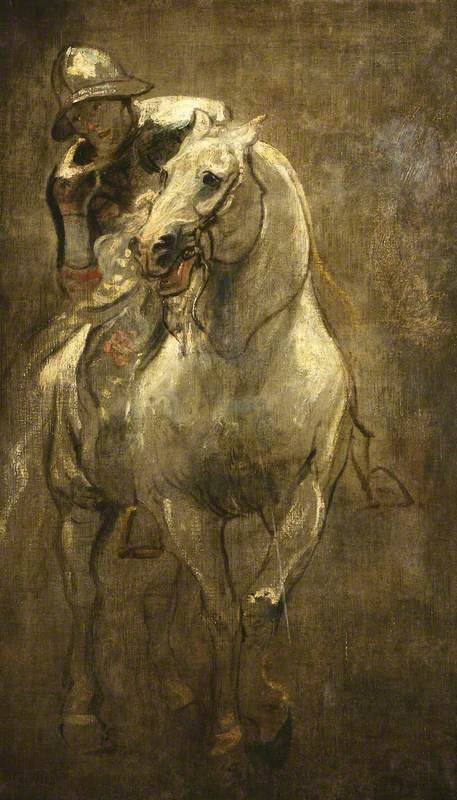
Why this Missing Piece of History is Important
Anthony van Dyck, one of the most prominent Flemish Baroque painters of the 17th century, was born in 1599 in Antwerp, the son of a silk merchant. He began an apprenticeship with an Antwerp painter, Hendrick van Balen, when he was 10 years old, and joined the painter’s guild nine years later. It is highly likely that, at some point, he worked with Peter Paul Reubens.
In 1620, van Dyck, who, at the time, was primarily a painter of portraits and religious scenes, went to England and worked for a brief time at the court of King James I. He returned to Antwerp and then spent a number of years in Italy, where he was greatly influenced by the dramatic techniques and compositions of Titian, Veronese and Tintoretto.
Much of his time in Italy was spent in Genoa, where he became acclaimed as a portraitist, often posing his aristocratic subjects full-length in luxurious fabrics against classical backgrounds. Van Dyck returned to Antwerp in 1627, where he was much in demand for portraits and religious works, particularly large altarpieces. His works in this period grew more confident and refined, with softer brushwork and a subtler color palette.
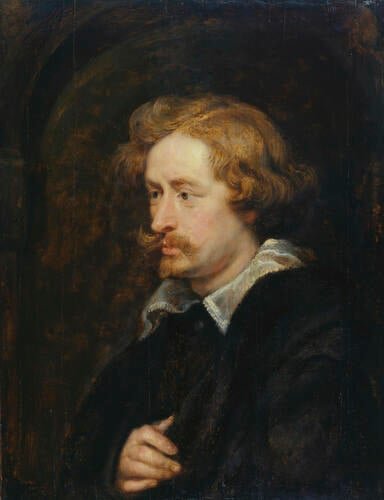
In 1632, at the request of King Charles I, van Dyck returned to England. He was knighted by King Charles, given an annual pension and was appointed as the “principal painter in ordinary” to Charles’ court. In this position, van Dyck received steady work as a portraitist. His portraits during this period more than hinted at his subjects’ personality, while also imbuing them with grace and elegance.
Van Dyck’s style had a tremendous impact on later English portraiture by artists such as Geoffrey Kneller and Thomas Gainsborough. Showing his influence in another realm, the term “Van Dyke beard” is named for him.
Sir Anthony van Dyck died in 1641 at the age of 42 in London. His death most likely was from tuberculosis. As a measure of his recognized status as an artist in England, he was buried in St. Paul’s Cathedral. Unfortunately, his tomb was destroyed in the Great Fire of London in 1666.
What to Do if You Know Where This Missing Piece of History Is
If you recognize Anthony van Dyck’s “Soldier on Horseback” or Carracci’s “A Boy Drinking,” have any information about them, or know the whereabouts of either, please contact us.
Read more “Still Missing” articles here: https://arguscpc.com/category/still-missing/
